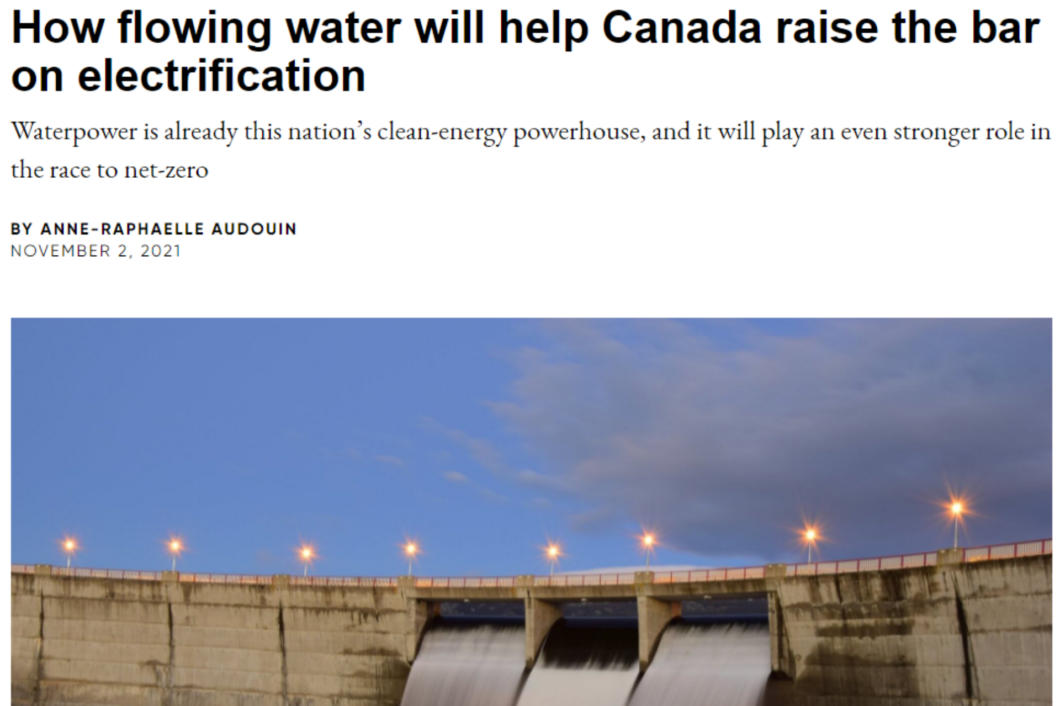It was a defining moment. Leaders from more than 190 countries assembled in Scotland yesterday, along with thousands of supporting ministers, senior advisors and negotiators. UN Secretary General António Guterres welcomed them to COP26 – the 26th United Nations Climate Change Conference – and then challenged them to collectively up their greenhouse-gas-cutting game.
It seems Canada is responding to that call. Steven Guilbeault, the newly minted minister of environment and climate change, is in Glasgow and knows a thing or two about climate leadership. This is not Minister Guilbeault’s first rodeo; he has been to 19 UN climate summits.
Canada has committed to reducing greenhouse-gas emissions by 40% to 45% below 2005 levels by 2030, and our government has pledged to decarbonize the economy by 2050. It also recently committed to achieving a 100% net-zero-emissions electricity sector by 2035. And waterpower will be central to delivering the goods on this agenda.
We have a strong base to build on, but getting to that zero-carbon grid will require a great deal of collaboration and negotiation between different industries, utilities and governments. That’s why, two weeks ago, my organization, WaterPower Canada, joined up with five other associations to form Electricity Alliance Canada. The coalition represents the leading suppliers of electricity to consumers and markets in Canada. All of us will work together to promote the power of electrification.
Hydro is already the backbone of Canada’s enviably clean electricity grid. Water flowing through turbines produces close to 90% of Canada’s renewable electricity, and 60% of the country’s electric needs are powered by water.
Read the full op-ed by Anne-Raphaëlle Audouin, President & CEO, WaterPower Canada, on the web or in a pdf here.

